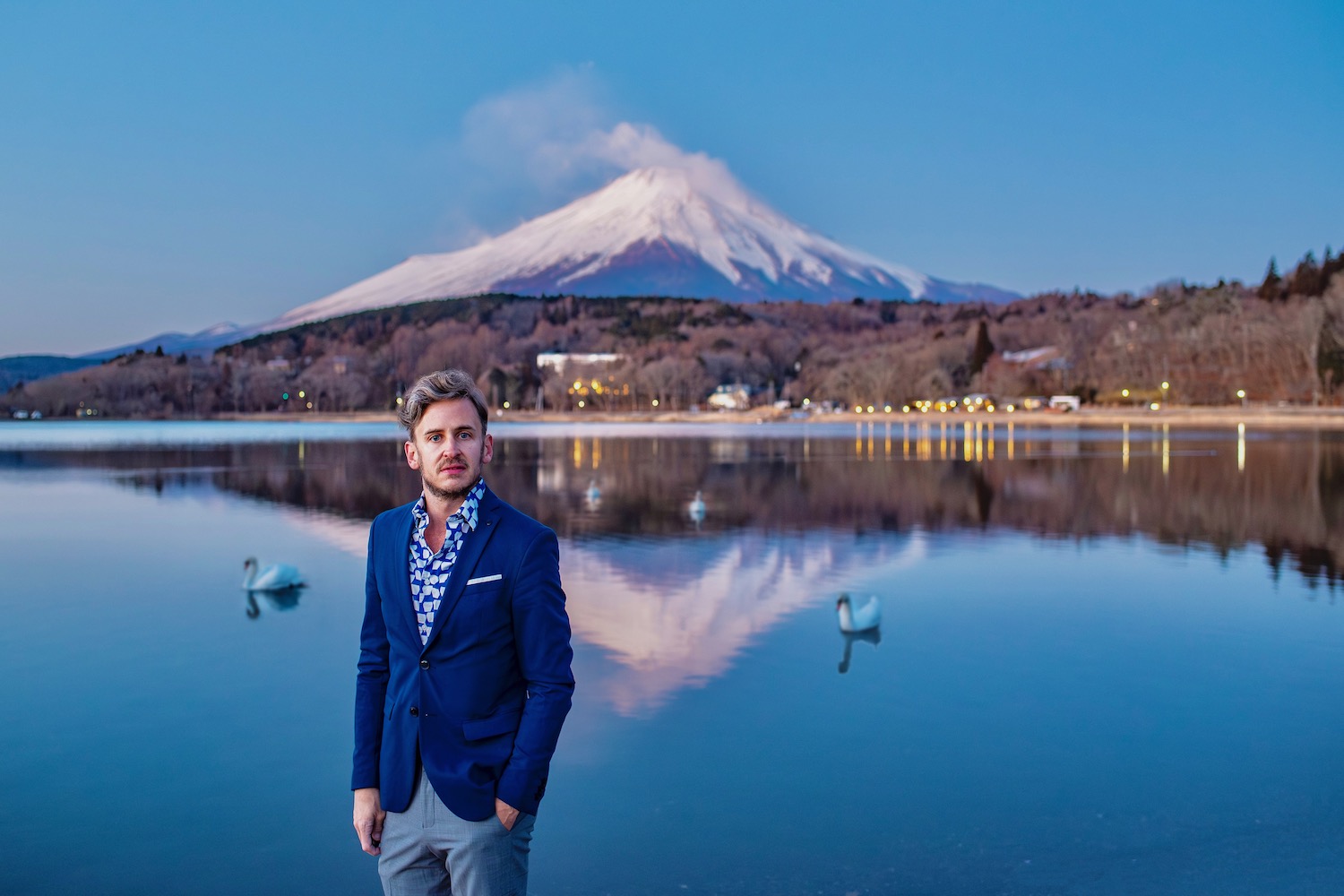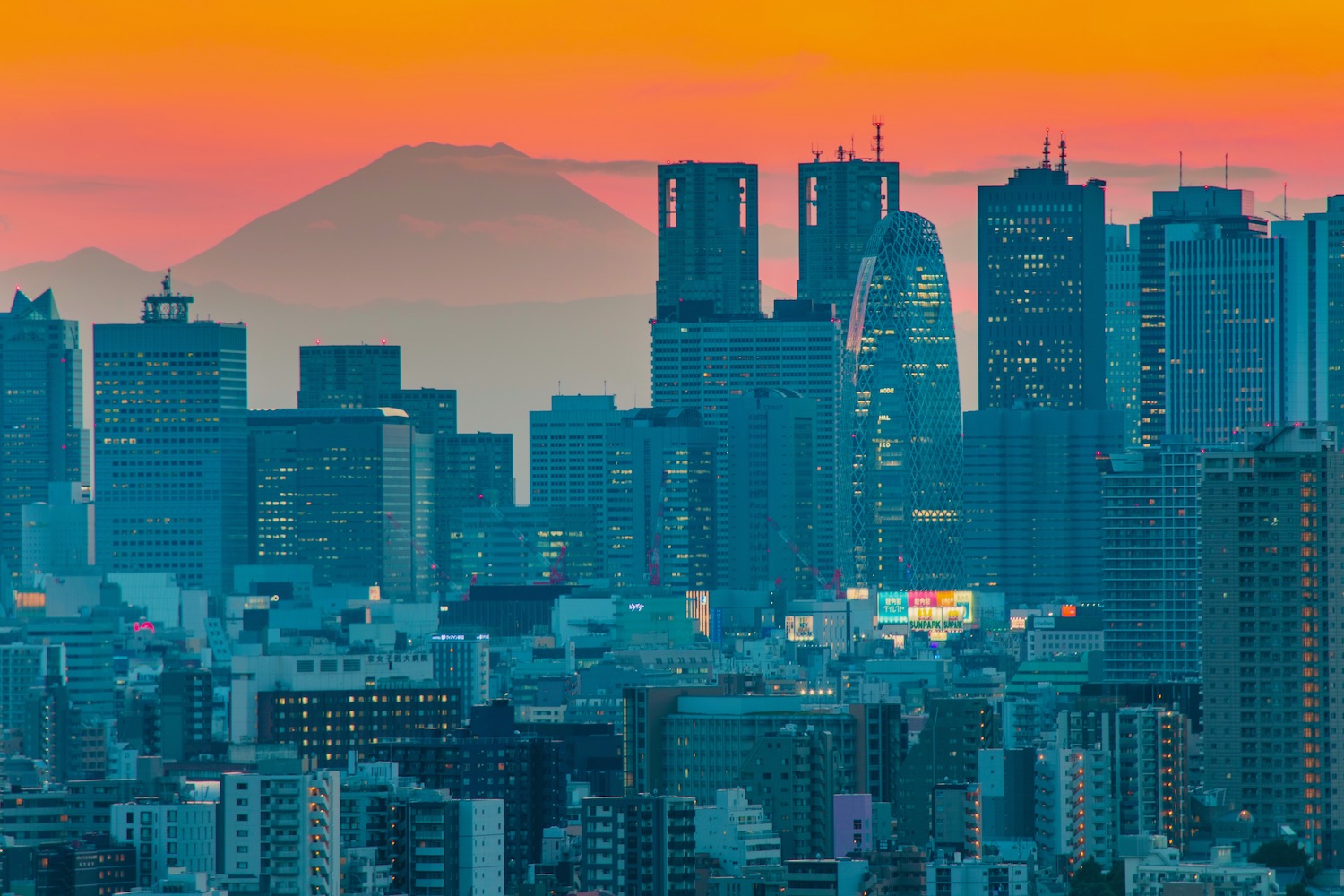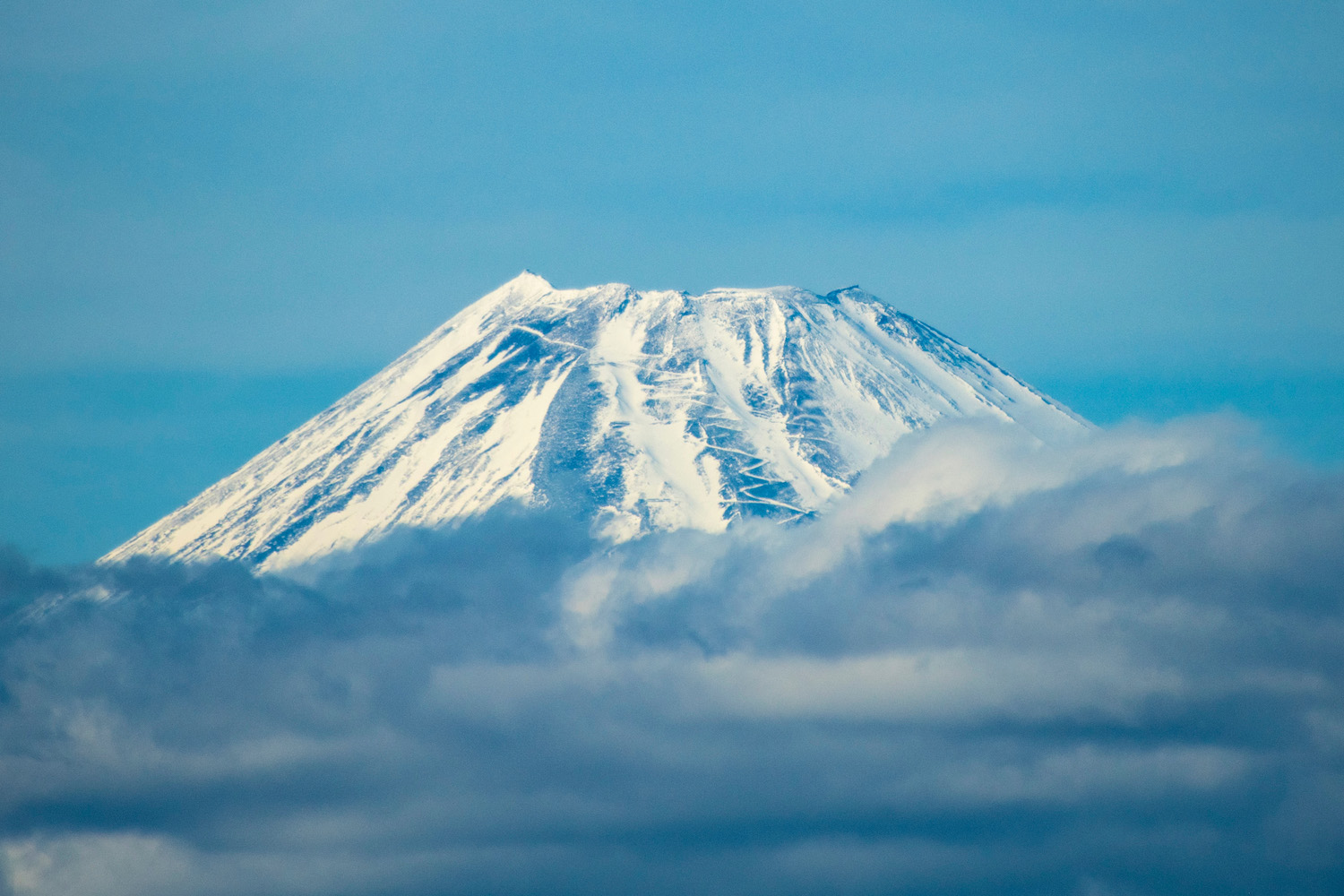In one sense, traveling to Mt. Fuji in winter is foolish. You can’t climb the mountain during winter months—I could barely deal with the weather at the precipice at the end of August.
On the other hand, visiting the Fuji Five Lakes region (which is as close as most people get to Japan’s iconic peak at any time of year, let’s be frank) in the coldest part of the year has many upsides. Clear, blue skies and almost non-existent crowds, even in the pre- (and, hopefully soon, post-) coronavirus era.
Whether you’re eyeing a face-to-face meeting with Mt. Fuji in December, January, February or March, you’re in the right place to plan a winter rendezvous with the behemoth.
Why I Went to Mt. Fuji in January
I had never really considered visiting Mt. Fuji in winter before about a year. However, when it became clear that my 2020 cherry blossom trip would be canceled due to Covid-related restrictions (and, therefore, that I’d be getting back to Japan in January 2021, at the earliest), my desire to see Fujisan again cornered me into this reality. So eager was I to reunite with Japan’s most famous mountain, in fact, that I traveled there literally the day I got out of quarantine.
Superficially speaking, I also wanted to get more shots of Fuji with its famous snowcap. All but one of my previous visits occurred during warmer months of the year, which saw Mt. Fuji beautiful in its sheer size, but also “bald.” The bad news this year, as you’ll see in some of my photos, is that Fuji’s southward-facing slope was almost snow free (which has some seismologists and citizens alarmed about the potential for a near-future eruption—let’s hope that doesn’t happen!)
Where to Go to See Mt. Fuji in Winter
Lakes Kawaguchi and Yamanaka

My favorites of the Fuji Five Lakes, Kawaguchiko and Yamanakako are wonderful places to see Mt. Fuji during the winter months. This is especially the case if you can reach each lake’s shores early in the morning, before its waters are disturbed by boats or wind. This is your best chance of seeing the famous “mirror image” of Mt. Fuji—this alone is worth the time and trouble! At Hirano Beach on Lake Yamanaka, you may also be able to see swans.
Chureito Pagoda

Another place to prioritize when you take a Fuji winter adventure is Chureito Pagoda, which sits on a hill just north of Fujiyoshida city, about 15 minutes by car or train from Kawaguchiko Station. While this place is most famous for the views it offers during the cherry blossom and autumn color seasons, there are some benefits to visiting in winter. First and foremost that almost no one else will be here, apart from elderly Japanese people exercising nearby!
Fujiyoshida

Chureito Pagoda is Fujiyoshida’s most famous place to see winter views of Fuji, but it’s not the only game in town. Once you finish at the pagoda, set your GPS for Nishiura Street, which is also sometimes known as Honcho 2-Chome. You have to be careful here—this is a busy street with a lot of traffic, despite what some Instagram photos portray—but the view of the mountain through it, especially in winter, is worth the scorn of drivers as you stand in the road!
Hakone

I’m generally not a huge fan of Hakone, neither for its expensive and overrated hot springs, nor for the cloudy weather it suffers most of the year. However, if you want to see Fuji in winter, there are few better fews than from Hakone’s Narukawa Art Museum on the shores of Lake Ashi. The museum is structured so that Fujisan (and the lake) is “framed” as a piece of art, a sight that alone justifies that somewhat high cost of admission.
Shizuoka prefecture

Perched above the underrated city of Shizuoka, Nihondaira allows you to take in a view of Fujisan rising above the picturesque port of Shimizu, a perspective that is famous among Japanese, but relatively unknown to foreigners. I would also recommend heading down to Miho Beach, if you can, although it’s obviously too cold to swim in winter. Another great Shizuoka prefecture destination to see Fuji in winter is Higashitaganoura, where you can marvel at the Shinkansen speeding past the mountain!
How to Organize Your Winter Trip to Mt. Fuji
I needed to be “at home” (which is to say, in a hotel with WiFi) by 1 PM on the winter day I spent in the vicinity of Mt. Fuji, which set two hard borders for my trip. Firstly, that I would need to stay extremely near the mountain (rather than in Tokyo, as I might’ve ordinarily done when taking a Mt. Fuji day trip) and secondly, that I would need to rent a car, rather than relying on the mediocre public transportation around Fujisan.
However, if you want to see Mt. Fuji in winter and you aren’t on a rigid time schedule, you can be more flexible. For example, you could ride a Fujikyu bus from Shibuya to Kawaguchiko and back and visit solely as a day excursion. Or, you could sleep first in Kawaguchiko, then in Hakone and finally even in Shizuoka, to get many different views of the mountain before continuing on about your winter trip to Japan. Yet another option is to stay in Tokyo, but ascend a viewpoint (such as Bunkyo Civic Center; the picture below is from there) and enjoy views of the mountain from the city center.

Other FAQ About Winter Trips to Mt. Fuji
Can you climb Mt. Fuji in winter?
You cannot climb Mt. Fuji in winter. The climbing season ends the first weekend of September, and does not begin until July of the following year. You can take a winter hike at many places in the Fuji Five Lakes region, however.
Can you see Mt. Fuji in winter?
Winter is the time of year when it’s easiest to see Mt. Fuji, whether from the shores of Lake Kawaguchi, the hot springs town of Hakone or even from cities like Tokyo and Shizuoka. This is because the weather in east-central Japan, where Mt. Fuji is located, tends to be clearest in months like January and February.
Is Mt. Fuji always covered in snow?
Mt. Fuji wears a “snow cap” for most of the year, but tends to lose in starting in June, a few weeks before the climbing season begins. The year’s first snow, meanwhile, usually falls in early-to-mid September, although snow atop Mt. Fuji in August is not entirely unheard of!

The Bottom Line
Visiting Mt. Fuji in winter isn’t a fool’s errand, but you need to do so with some truths in mind. Namely, that you cannot climb Fujisan at this time of year under any circumstances—the climbing season actually ends in early September. Of course, given that most people don’t want to climb (and maybe not even hike at) Mt. Fuji anyway, this shouldn’t be much of as issue. Regardless of where you go to see Mt. Fuji during the colder months, be it Hakone, the Fuji Five Lakes region or even Shizuoka city, you’re in for a treat. Assuming you get a day with clear skies—and that’s likely at this time of year—you’ll also be one of the only people enjoying the astounding views of Mt. Fuji, which will make it all the more special.






